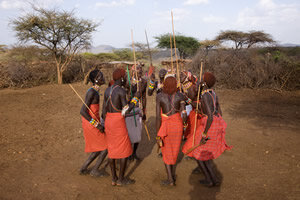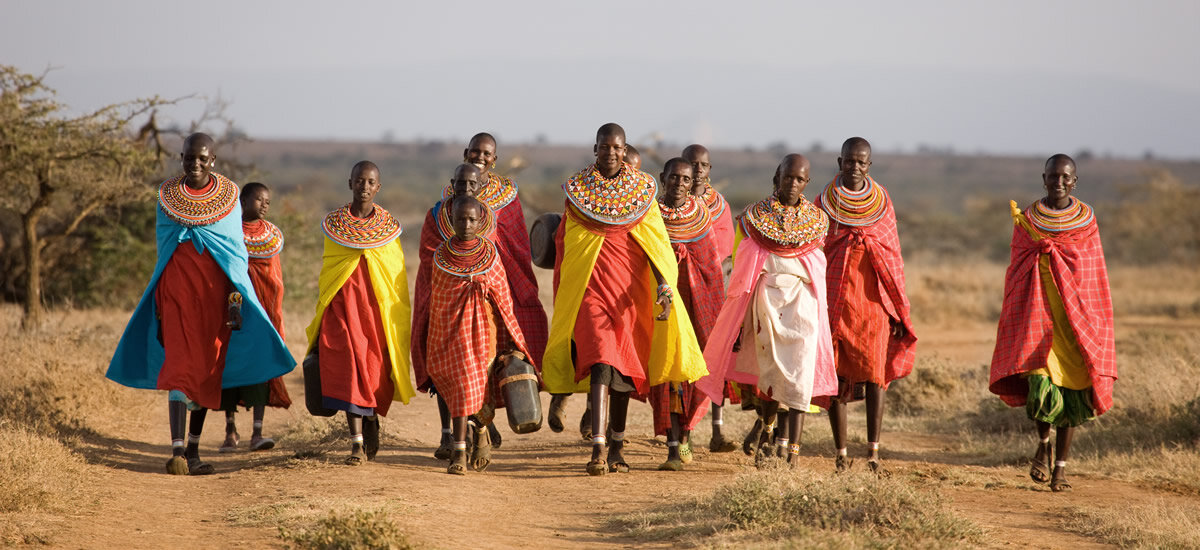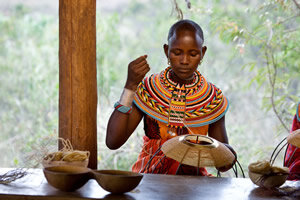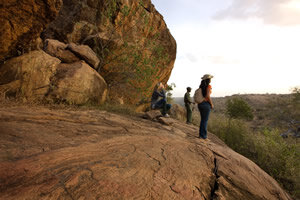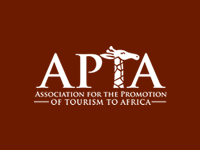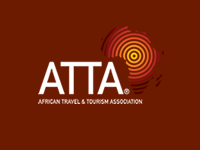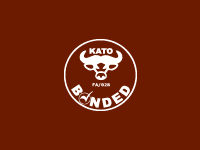Conservation & Community
Ol Malo is 5000 acres of game sanctuary where free roaming wildlife is protected, the area is patrolled by our private teams and the grazing and water managed so that wildlife can survive throughout the dry season. We employ a community security team on our Eastern boundary to protect an important elephant migration and feeding area. Conservancy fees paid by guests assist in the funding of the security teams and conservation efforts in neighboring areas. We work alongside the Samburu Trust whose wildlife team works over 1 million acres of community rangelands bordering us and further afield, the community livestock and elephant historically share similar migration routes and so this community conservation method works hand in hand.
Ol Malo’s helicopters and aircraft provide air support for collaring and anti-poaching efforts, working alongside Kenya Wildlife Service, The Samburu Trust, David Sheldrick Wildlife Trust, Save the Elephants, Space for Giants and in the past provided all the GPS data collection for the Wild Dog branch of the Laikipia Predator project during its set up stage.
Ol Malo supports The Samburu Trust which is an amalgamation of several initiatives that were set up in response to the great hardships caused by the drought that ravaged Kenya between 1999-2001 – one of the country’s worst in living memory. Whole regions were devastated by the disaster, but none more so than the dry heartland of the Samburu community, where the Samburu lost the majority of their cattle and therefore the major part of their livelihood. With a desire to help, Julia Francombe initially provided drought relief for the neighbouring communities from her own resources and those of the family, but soon came to acknowledge that a more robust and longer term approach was needed.
Beading - when Julia had left University she started employing six women in the Sampiripiri Arts Workshop – initiating the Naaripisho beading program. During the 1999 drought – the majority of the Samburu men were constantly on the move, far from home trying to find fodder for the cattle to keep them alive. The women and children were left at home. Julia established the Sayen E Ndaa or ‘Beads For Food’ program, which was so effective that within a week over six hundred women were exchanging beads for food for their children. When the drought finally broke – the Beads for Food program evolved into a workshop where the women can gather and practice their ancient art of beading. Using traditional beads and patterns, they are able to perpetuate this part of Samburu culture, which was previously dying out. Income derived from the sale of their work has empowered a generation of women for whom any other form of formal income was unlikely. Testament to the effectiveness of the program, during the prolonged 2017 drought, there was no need to distribute ‘food aid’ as the women were able to support their families and community through income from the sale of their beaded work.
Healthcare - as the beading initiatives began to take off, some of the women also began to bring their sick children in to the workshop, asking for help – among them a number of tuberculosis sufferers requiring long-term monitoring, and many suffering from drought-related ailments. Looking after sickly children led Julia to start up the L’chekuti Painting Program, so that the children could come every day for monitoring and provision of the correct medicine and nutritious food (during the 2006 drought, over five hundred children came to the Arts Workshop to receive help) The paintings were sold at the lodge shop to try and raise funds for the community. Over time numerous other medical issues came to light, including the eye disease, trachoma, a potentially blinding disease spread by flies. Through implementing preventative measures and conducting mobile health care clinics, the Samburu Trust has successfully returned sight to over 500 people suffering from trachoma and has successfully eradicated the disease in other nearby pastoralist communities as well.
Education - Initially the goal was to provide a school for the children in the local area; the project has since grown into a model of learning for pastoralist children in northern Kenya. The Trust together with the community worked to create a concept for learning, which suits the Samburu people and their nomadic lifestyle. Education has been customized to respect the culture, land and traditions of the Samburu children. Teachers are chosen from the Samburu community, enabling the children to learn in their own language. There is a culture of respect in the classroom, to give the children wings to fly while keeping their feet strongly rooted in their land.
“The mission of the Samburu Trust is to protect and secure the future of the Samburu people and their land through education, conservation, healthcare, water supply, women’s opportunities and Eco-tourism.”
Ultimately this means helping the Samburu to maintain their traditional values – including honesty, kindness, hospitality and respect, along with their nomadic behaviour and traditional skills – while assisting them with health and educational issues in a way that will avoid their dependency upon the Trust. The Trust acknowledges the law of unintended consequences and does not intend to introduce programs that will interfere with the Samburu people’s traditional culture, whilst remaining dedicated to the survival of the wildlife that has coexisted harmoniously with the people for thousands of years.
“I was beginning to think I needed to get more into conservation and so we decided that we would have our livestock and we would combine the livestock with a tourism enterprise. Coming here with a tourism enterprise meant that we could now really concentrate on the conservation cause tourism and conservation go hand in hand. Rather than kill
the animals but your whole concept comes around to protecting them and the best way is to protect them.
Our whole philosophy is to give them an experience of what we have grown to know and love here.”









